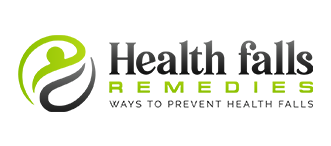
To most people, the chest and triceps workout aren’t necessarily two of the first body parts that come to mind when asked to mention the favorite muscles they’d like to build up. Yet it doesn’t make them any less worthy of attention.
In fact, these are two muscle groups that deserve your undivided attention if you want to build strength and mass while at the same time making your muscles resilient and stress-free – an aspect that should never be forgotten when going through any kind of exercise program, but especially so if you’re aiming at building strength and muscle mass.
Why Work Out Chest and Triceps Together?

Chest and triceps workouts are an essential part of a complete workout routine. Chest exercises will help you develop the chest muscles that support your upper body while triceps exercises will add mass to your arm muscles.
A common misconception is that only men need to worry about their chest, but this is simply not true. A strong chest can help prevent back pain and improve posture, leading to more energy throughout the day.
The incline dumbbell bench press is a great exercise for developing the long head of the pectoral muscle while challenging both chests and triceps at the same time which makes it a great choice for those looking for a full upper body workout.
Chest and Triceps Anatomy
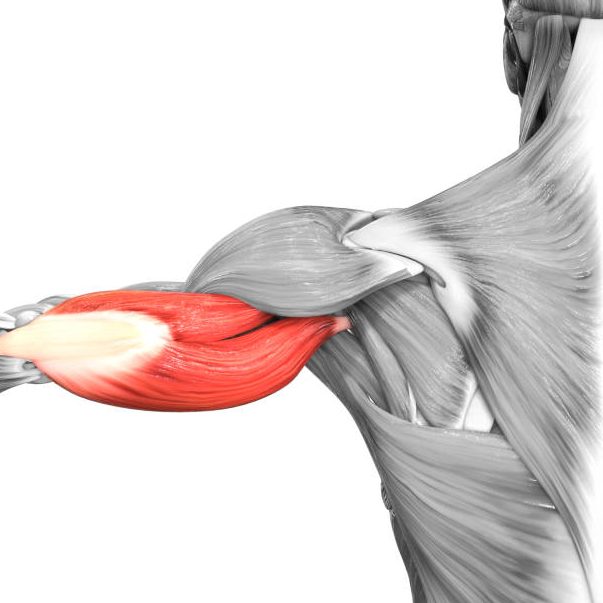
Chest and triceps muscles are located on the chest or back. The pectoralis major muscle is located on the anterior chest. It is responsible for flexing the arm at the shoulder joint to adduct or bring together the arms in front of the body.
The pectoralis minor is also a muscle found in this region. It helps to stabilize the shoulder blade during movement. A third muscle that makes up this area is called the serratus anterior which helps to protract or push outwards at an angle from your body. This muscle can be seen when you perform a push up as it wraps around your rib cage right below your arm pits.
1. Chest
When looking for the best chest exercises to build a strong chest, it’s important to include the muscle groups that support the pectoral muscles.
- Pectoralis Major
The Pectoralis major is a thick muscle on the front chest. It crosses the shoulder joint to connect your upper arm to the breastbone.
Contracting this muscle moves your arm forward, drawing your body closer to an object in front of you. This muscle can be found in any type of chest workout for strength and mass.
- Pectoralis Minor
The chest muscles are divided into two different parts. The pectoralis major is the large muscle that covers the front of your rib cage. It moves the arm forward. The pectoralis minor is a tiny muscle that attaches to the bottom edge of your rib cage and helps hold it in place.
When you exercise the chest muscles, you can strengthen both parts at once by doing pushups or bench presses. You can feel your pec minor working when you do these exercises because your arms will be outstretched in front of you and parallel to one another instead of being together in front or behind you like on a bench press.
- Serratus Anterior
You’re probably not aware of it most days, but your serratus anterior is a muscle that’s very much in use when you do most activities. That’s because the muscle stabilizes your upper body against forces coming from other directions.
One way to engage your serratus anterior more deeply is to focus on it during chest and triceps workouts. During chest press with weights or pushups: contract your abdominal muscles, pull in your lower ribs so they don’t flare out, contract the front part of your shoulder blades (the part closest to your spine), hold for a few seconds while inhaling deeply through the nose.
2. Triceps
The triceps is a muscle on the back of the arm that helps us to extend our arms. It consists of three muscles: the long head, the medial head, and the lateral head. The long head is found at the back of your arm; this attaches to your shoulder blade.
The medial head is found in front of your upper arm bone (humerus) and attaches to your shoulder blade. The lateral head also attaches to your shoulder blade, but it’s found on the outside edge of your upper arm bone (humerus).
In order to work the full range of your triceps, you need to contract all three heads. You can do this in two ways: Do a single joint movement with your elbow bent 90 degrees so that only one head is contracting, or do an isolation movement with a straight elbow so all three heads contract.
For maximum contraction, you want to go past 90 degrees until you feel pain – then release! Repeat 2 sets with 30 seconds rest between sets.
- Long Head
This is the muscle that attaches to the back of your arm bone (humerus) and inserts into your forearm below your elbow joint. In order to work out this muscle, it is best to do exercises that bring the arm forward. This can be done through various movements such as overhead extensions or pushups with a close grip.
If you are looking for a more intense workout, you can try bench dips, where you are pushing down on a weight bench with your arms straight in front of you while balancing on edge. This move puts an extreme amount of pressure on both your chest and tricep muscles.
- Lateral Head
These muscles are located on the sides of the body. They are responsible for rotating the shoulder joint. When both heads of these muscles contract, they abduct your arm from your body (or as we say in fitness terms, bring it out to your side).
This workout is excellent for building strength and mass in the lateral head. The lateral head is a smaller muscle group, so you’ll have to work a little harder than other muscle groups, but that means you’re more likely to see results! If you want an intense workout, this should be at the top of your list.
- Medial Head
Named for the area where they’re located, both the medial head of your pectoralis major and your triceps brachii muscles are responsible for various motions.
The former is used when you’re pressing or lifting something away from your body, while the latter is a stabilizer to keep your arm from swinging too much.
Meanwhile, it’s also worth remembering that these two muscle groups can act together during various upper body movements. The medial head of the pec major is made up of two parts: the sternocostal head and the clavicular head. Together, these makeup about 1/3 of the total size of the pectoralis major.
They’re involved with any type of pulling motion (like on a barbell or dumbbells) and their origin points are on your chest bone just above your nipples.
The fibers travel down towards your nipple before attaching to either side of the chest wall – forming what looks like an upside down letter Y on top of your breastbone – before branching off into three different sections called fascicles.
Meanwhile, if you’ve ever noticed that when someone has really big arms, it seems like their biceps take up most of the space between their elbow and shoulder joint, then this is because their triceps have been more developed than those other muscles in that area.
The Best Chest and Triceps Workout
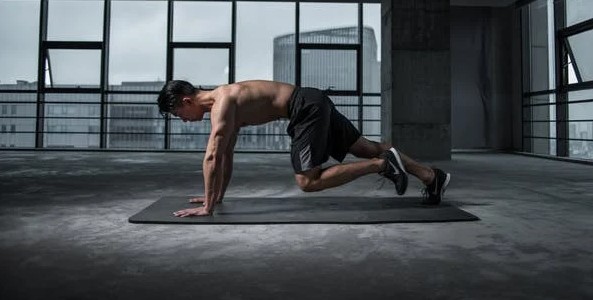
Many different variations can be done for chest and triceps workouts. Some of the best chest exercises to do are pushups, dumbbell bench presses, barbell bench press, flyes and cable crossovers.
One of the best triceps exercises is a close grip bench press as it targets both the medial head as well as the long head. Let’s discover more about it in detail below.
Best Chest Exercises
You will need to perform at least two chest exercises on your chest day. The first exercise is a dumbbell bench press. Hold the dumbbells in front of you with your arms straight and palms facing each other.
Lower the weights until they touch the ground then press them up until they touch just below your chin. Do 10-12 reps then switch to the other arm for another 10-12 reps before resting for 30 seconds or so. Your second exercise should be an incline dumbbell flye.
This is an excellent movement for developing upper chest strength as well as working on that V taper for women which we all love! You’ll start off with a light weight and lie back on a bench about 45 degrees or so with your head supported and both feet on the ground.
Pushup
- Place your hands on the ground, placing your feet on the ground in between your hands. This is the starting position for a pushup.
- Bend at the elbows to lower yourself down until your chest is near or touching the ground.
- Press up again to complete one pushup.
- Repeat this process for as many repetitions as you want (or can do). 10-20 is a good goal. Pushups are primarily used to build upper body strength, but they also help with stabilizing muscles throughout the entire body because they require all major muscle groups to be activated. They are also excellent tool for stress relief because they force you to focus on breathing and control your breath in order not to hyperventilate during the exercise.
- If you have trouble getting into position or maintaining it with good form, try lowering yourself down only halfway, then rising back up so that you’re performing what’s called half of a pushup:
- Do 10 half pushups followed by 10 full ones before switching directions if necessary.
- For more difficulty, place your legs on something elevated like a bench or chair to decrease the range of motion required in the arms.
- To make this workout even more challenging, place your hands closer together than shoulder width apart while keeping your palms flat on the floor.
- Elevating your feet will also increase difficulty since it makes balance more difficult!
- To see how many pushups you can do in a row, try doing as many as possible without stopping. You’ll be amazed by your own ability to do more!
Dumbbell Bench Press
Start with 10 repetitions on the bench press for three sets. The next exercise is a dumbbell flye. This exercise will work the upper chest and give you the widest range of motion for your shoulders. Perform three sets of 10 reps to complete this workout set.
Next up are dips. Dips are a great triceps builder that also works the upper chest as well as your core muscles. It’s important to keep your body as straight as possible when going down on this movement so that you’re not putting unnecessary stress on your joints. Start with two sets of 20 reps per set to start off with this one.
As always, maintain proper form throughout these exercises by maintaining good posture throughout each repetition. Make sure to take regular breaks in between each set and avoid locking out at the top of any of these exercises.
Barbell Bench Press
Start by lying on your back with your feet flat on the ground. Lift a barbell off the rack just over your chest. Bend your elbows to lower the barbell towards your chest.
Push against the floor with you feet to press the weight up, straightening your arms at the top. Slowly lower it down to starting position. Complete 6 reps of this exercise before switching to dumbbells or another variation of this exercise if desired.
Remember to breathe when you lift, especially when lowering the weight. You can either keep alternating sets for 12 total repetitions of each exercise, or change exercises every set so that all three exercises are done once in a row for 12 repetitions each time.
Dumbbell Bench Press: Lie on your back on bench and grip two dumbbells placed shoulder width apart under shoulders with palms facing inwards (thumbs pointing forward).
Begin by pushing against the bench as you bend your elbows bringing weights together near upper chest and then push back as you straighten your arms for one repetition.
Keeping them tight throughout entire motion, make sure not to swing weights past body during motion which could put strain on muscles instead of pressing them upwards
Flyes and cable crossovers
Flyes are a great exercise for developing the chest muscles by isolating them from any help from the arm muscles. Flyes also help to build up your upper back muscles.
Cable crossovers are similar to flyes but instead of pressing outwards like you would in flyes you lean across your body to press the weights away from one another. This is a great exercise for strengthening the chest and triceps as well as working on posture.
Be careful not to do too many repetitions simultaneously because this can lead to over-training. Start off with 8-12 repetitions and gradually increase the reps if it’s too easy for you.
If there is no weight in both hands, then make sure that you keep your elbow tight against your body when performing this exercise because if it moves, it puts unnecessary strain on the targeted muscle groups, which will lead to injury.
Best Triceps Exercises
Many people who are looking to add size to their upper arms often neglect triceps training. You can’t do a lot with arm exercises alone. Your triceps will make the difference in between having an average or a great upper body.
The exercises that I recommend for adding mass to your triceps are close-grip bench presses, pushdowns, skull crushers and lying French presses.
These exercises should be done with heavy weight but low reps (1-5 reps). Make sure you give your muscles enough time to rest in between sets so they can grow as much as possible.
1. Rope Pressdown
- Attach a rope to a high pulley and step onto the middle of the rope with both feet.
- Face away from the pulley and walk back until you balance the middle of your feet with your arms extended above you. Your upper body should be in an L shape with your forearms perpendicular to the floor while gripping one side of the rope.
- Bend your elbows so they’re at a 90-degree angle, then press down by straightening your arms so they are perpendicular to the ground in front of you.
- Make sure not to lock out your elbows at any point during this movement! Be sure to maintain tension on the entire time by contracting your chest muscles throughout the exercise.
- Return back to starting position and repeat. Perform three sets of 10 repetitions before moving onto the next exercise for best results.
2. Overhead Triceps Extension
- Start in a seated position with your back straight, feet flat on the ground and knees bent at a 90 degree angle in front of you. Push the weight up to your chest with your hands positioned at eye level.
- Keeping your elbows close to the body, extend them backwards so that the arms are completely straight out from the shoulders.
- Slowly bend them forward again until they’re next to your torso before lowering them back down to their starting position for one repetition. If this is too difficult or uncomfortable to do, place a towel or something soft under your head so it’s resting more comfortably on the ground.
- For those who find this easier than sitting, try placing a bench directly behind you and sit upright against it as if sitting in an office chair.
3. Bench Dips
Start by sitting down on the bench with your feet on the ground. Place your hands behind your head so that your elbows are bent at 90 degrees.
Slowly lower yourself down to the ground by bending your arms until they are parallel to the ground. Push back up to starting position. Repeat for as many reps as you want or until exhausted.
Make sure you do this exercise slowly and with good form! It may help to have a friend watch you while you do it the first time to ensure you’re doing it correctly. Next, we’ll be performing pushups.
Grab an appropriate object (anything from water bottles to weighted bags) and hold it above your chest as you assume the plank position (pushup position).
Then lower yourself all the way down until your chest is about an inch off the floor before pressing back up to start again. Keep going for about 5 minutes straight without rest periods between each set of pushups.
Why do you need to train your Chest and Triceps?
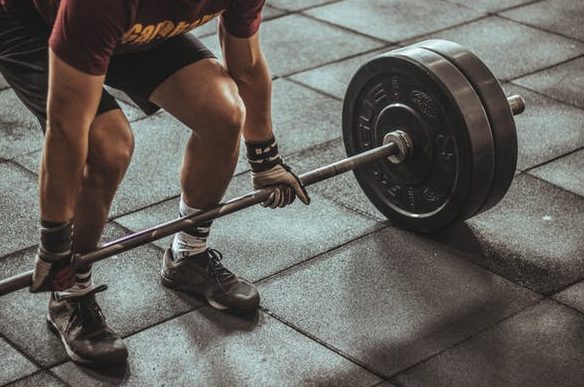
Training your chest and triceps is a must for complete upper body development. These two muscle groups are responsible for bringing the weight from your lower extremities to your shoulders, so it’s essential that they’re strong enough to do the job.
Along with making you look like a total badass when fully developed, having strong pecs and arms will help you be less likely to sustain shoulder injuries during everyday life or training.
Plus, these two muscles are involved in every pressing motion in the weight room (aside from some dumbbell movements) so they’ll make sure that you can keep up with any workout.
1. Enhanced Aesthetics
You’ve all seen movie scenes where a guy’s shirt is straining to cover his massive chest and arms. If you want to be able to impress the ladies like that, then this chest and triceps workout will do the job! This all-round workout strengthens the chest, back, shoulders and triceps.
It also helps you lose fat in those hard-to-reach places like your stomach and lower back. ‘And don’t forget about your forearms!’ I’m sure you’ll agree with me when I say it’s not enough just to have big biceps
If you’re lucky enough to have big arms, then they’re going nowhere without some proportional development on the other side of your body.
2. Pushing Is A Basic Functional Movement
Pushing is a basic functional movement that we use in our daily life. It’s a movement that we have to do as humans. Think about pushing your car off the street or when you’re helping someone move something heavy.
Pushing is one of the most important movements because it activates the front body muscles, which are crucial for core stability and injury prevention.
Plus, pushing helps us maintain balance by engaging the stabilizing muscles in our legs, hips, and back. If you want to be able to push yourself out of bed from lying down or push a heavy bag out of your way in a crowded airport, then you need to work on strengthening those muscles!
3. Improve Pushing Power
No matter what you are trying to do in the gym, being able to push heavy weights from a dead stop or at any other point during a movement is always key. It is one of the most important elements for developing power as well as overall strength.
In order to improve pushing power, it’s important to incorporate chest and triceps exercises into your workouts regularly. Improved pushing power is going to be beneficial in a variety of situations.
Training for Strength
If you’re looking for a great strength workout that will have you feeling the burn from head to toe, this one’s for you. It includes compound exercises that hit several muscle groups at once for maximum results in minimal time. And since it only has three exercises to keep things simple, there’s no excuse not to try this routine.
Start with a set of pushups followed by a set of bent-over rows. Do 10 reps each for these two movements without resting in between sets. Next up is another set of pushups, followed by another set of bent-over rows (10 reps each).
Rest 2 minutes before doing the final exercise, which is a set of barbell curls followed by a set of hammer curls (10 reps each). Rest for 2 minutes before repeating the entire sequence.
Training for Muscle Hypertrophy
When it comes to building muscle hypertrophy, there is no such thing as one size fits all. The best workouts for muscle hypertrophy will vary depending on your goals (i.e., mass or strength), your body type (endomorph, ectomorph or mesomorph) and your lifting experience level (beginner or advanced).
However, there are some general strategies that everyone can apply to get the most out of their chest and triceps workouts for muscle hypertrophy:
- Do compound movements first – Compound movements allow you to use heavier weights to stimulate more muscle fibers in your chest and triceps muscles. They also provide a greater range of motion than isolation exercises do. Examples include bench presses and squats.
- Keep your sets high but reps low – It’s important to push yourself hard during each set by lifting heavy enough weight to feel fatigued by the end. That said, while higher reps may be effective at promoting muscle hypertrophy in some cases, they should not be used when training for chest and triceps because they won’t allow you to lift heavy enough weights to recruit as many muscle fibers as possible.
- Perform 3 different chest and/or arm exercises per workout – Focusing on only one exercise would risk overtraining these muscles if done too frequently or intensely without sufficient recovery time.
- Incorporate drop sets – Drop sets involve performing two consecutive sets using progressively lighter weight until you reach fatigue. In between those two sets, take about 10 deep breaths before grabbing lighter weights for another set.
Onboarding FAQs
1. What are the benefits of this workout?
This workout will help you develop a stronger chest and tricep area. Chest muscles are important for supporting your shoulders to provide stability. A stronger chest will also help with breathing by expanding the rib cage more efficiently.
2. What type of equipment is required for this workout?
A flat bench is required for this routine. You can complete the exercises using dumbbells or a barbell if they are available to you.
3. How long should I rest in between sets?
Resting time can vary depending on your fitness level, but generally, rests should last between 30 seconds to 1 minute per set.
Bottom Line – Should you follow a chest and Tricep workout routine?
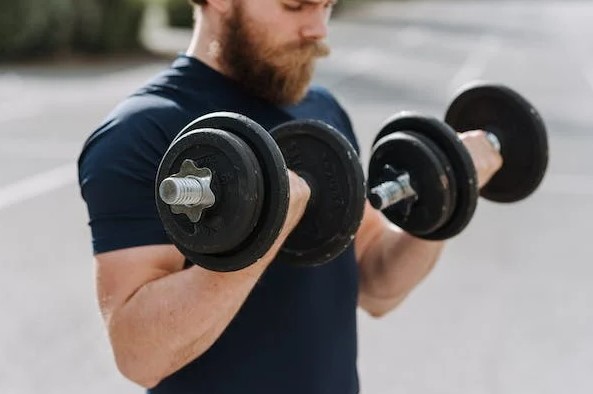
A chest and Tricep workout routine will help you build a strong, muscular chest and tricep region and can also be used as an anti-stress reliever. Squeezing your arm muscles during this workout routine releases tension that accumulates throughout the day.
Exercise provides many stress relief benefits because endorphins released during workouts help calm anxiety levels and relieve depression symptoms. Since excessive stress has been proven to increase mortality, illness, and injuries rates, it’s worth giving these strength training exercises a try!
